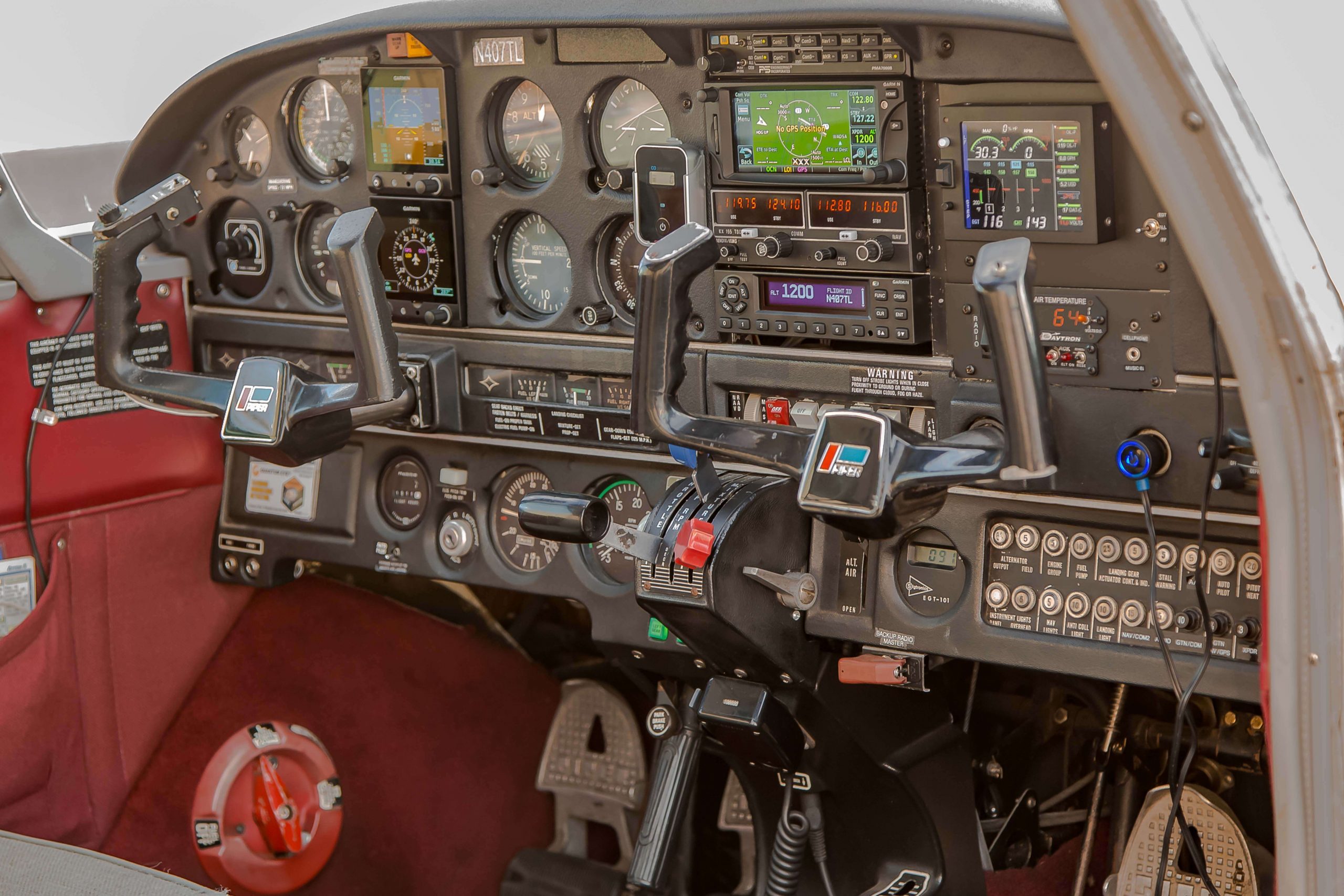Table Of Content

This had an extended fuselage for increased passenger comfort, wider cabin windows and doors, and an updated paint scheme. It also got a modified upswept rudder and an increase in wingspan to improve the takeoff run and rate of climb. (Air traffic controllers couldnt believe it, all saying say aircraft type!) It trued at 171 knots at FL 210. At FL190, it was 167 knots at 65% (30″/2,400 RPM at 10.5 GPH on the fuel flow gauge) at -26C. The III had a 1,400-hour engine, and I replaced it with a 1,800-hour factory reman from Continental at 1,483 hours.
Wing loading

Thats partly because the economy fixed-wastegate design keeps the turbocharger whirling away whether its needed or not. This tends to stress the engine and raises inlet air temperatures. Combined with poor engine cooling, it can cause considerable engine upper-end distress. Since the T-tail is located out of the propwash, it also does not have as good pitch authority at low speeds. In addition, a pilot who has flown both model Arrows told us the low-tail version reacts to flap lowering by pitching up, while the T-tail drops its nose.
New Piper Arrow (current version)
These range from heads actually separating from the barrel to burned pistons, exhaust valves, and valve-train failures. A second emergency AD surfaced in February when Continental discovered that information in certain service bulletins pertaining to rocker-arm hold-down bolt torque specifications was in error. The AD called for immediate inspection for the correct hold-down bolt tension. A variety of aerodynamic mods are available for PA-28s, from the usual flap and gap seals to the high-spiff factor LoPresti cowling. Speed brakes can be had from Precise Flight (though the Arrows high gear speeds make their value questionable). Such mishaps are rare-we only counted a few (none fatal) in our five-year survey.
Operating Weights
Arrow III owners report six-and-a-half hours of endurance, while Arrow II owners sometimes wish for larger tanks. Cherokee 160, Arrow, Arrow II, Arrow III… and a few turbocharged models in there for good measure. The PA-32 series also shares the same basic design, and, by extension, the Seneca. The PA-28 airframe, too, was made into a twin, in the form of the Seminole. It should be noted that the Arrow and Arrow II had a lower fuel capacity, and a correspondingly lower max range. The T-tail Arrows are considered to have the least preferential handling characteristics thanks to pronounced performance differences across airspeeds.
Key Design Features of the Piper Arrow

Comfort-wise, the seats were low-back, shoulder space is tight for two large men, and the back seat is not for tall people. I had all the seats changed to high-back and only put women and children in the rear seat. The cabin is quieter with the addition of an inflatable door seal and new quarter-inch front glass. Ventilation is superb, with a very competent heater and defroster.
Beech’s offering was the rather lackluster (though roomy) Sierra, while Cessna weighed in first with the Cardinal RG, then the Cutlass RG.
The structure is heavier, and the added weight is at the back (aft CG is a usually a problem, not forward), and its harder to clean off snow and ice. Operating idiosyncrasies Since getting the TSIO-360 started on cold mornings can pose a problem, we have two recommendations. First, try to get an airplane that has the electric priming system installed. Second, consider replacing the aluminum electrical cables from the battery with copper ones. Power settings are, frankly, a pain, and its not hard to overboost.
Enforcement Action Against Wing Walking Business Goes Over The Top
On the performance side of things, the Arrow II got a modified upswept rudder along with a 26-inch increase to wing span for improved rate of climb and takeoff run. Choose a full-size aircraft for your hangar, and take home a matching model Arrow to grace your desk. Once your dream of owning a Piper has come true, it is time to join the Piper Owner Society to connect you to other Piper owners and events.
Short Final: More Information, Please
Buying A Used Aircraft: Piper Archer - AVweb
Buying A Used Aircraft: Piper Archer.
Posted: Mon, 31 Jan 2022 08:00:00 GMT [source]
When I was looking to step up from my Cherokee 140 back in 2004, I thought the Arrow would be the ultimate transition. It looked to have reasonable performance, good handling and might be relatively inexpensive to maintain. It just so happened that a friend had one and invited me to fly along on a cross-country trip to the Midwest and back to Connecticut. This opportunity allowed me to fly and see firsthand how well this airplane performed. If the AD activity on the Turbo Arrow is fairly quiet, the service difficulty reports are more like a fraternity party — even taking into account that, for any airplane, the list of SDRs is usually far longer than of ADs. A handful of SDRs shows problems with the electrical system, including corroded battery terminals and defective alternator-drive couplings (the TSIO-360 uses a gear-driven alternator).
Cruise altitude is usually where the higher ground speed is balanced against the decrease in engine thrust and efficiency at higher altitudes. It increases the critical altitude by 5500 feet while boosting cruise climb and speed slightly, and lowering CHT and oil temperatures significantly. The Arrow is not a STOL airplane, but it doesn’t eat up runway, either. During letdowns, the Arrow’s gear serves as an effective speedbrake. The gear extension limit is close to the cruise speed (which really says more about the cruise speed than it does about the gear), so descents aren’t the problem they are in slick airplanes like the Mooney. And so it is with admittedly more pedestrian airplanes, like the Piper Turbo Arrow.
Of course this cavalier reply completely ignores the possibility that the engine is so quirky and failure prone that problems with ordinary pilots who are not trained astronauts may have problems. A telling comparison is with the accident roster for the normally aspirated Piper Arrow. For that aircraft gear-up errors by far dominated the list, with engine stoppages making up the second major accident cause. In fact, on the normally aspirated Arrow gear-related accidents outnumbered engine-related accidents by 114 percent. Fliers who responded to our latest call for feedback did not dwell on overtemping problems, since many had installed the new cooling kit and/or intercoolers. The cooling kit, which was made standard equipment in 1983, provides new baffles and extra louvers at the bottom of the cowling.
Piper deserves mention for the design of the seats in later aircraft, which have a crashworthy S-tube design meant to progressively collapse and absorb energy during an impact. The Piper Arrow ranges in horsepower from 180HP to 200HP based on the model and whether it includes a turbocharged engine. The turbo version of the Arrow IV was released in 1979 and also had the now defunct T-tail. It was powered by a 200-horsepower turbocharged Continental TSIO-360-FB engine.
The original III engine did not have pressurized mags, and it misfired badly at high altitude, until I replaced the mags. The IV has pressurized mags, and I recommend them to anyone wanting to fly over 13,000feet. One operator who had it installed described it to us as a wondrous gadget that allows him to fly all altitudes at 2300 RPM and 35 in. MP, keep TIT below 1400 and CHTs around 300 with fuel flow at 13 GPH, and offer much improved IAS at altitude. An extra benefit of lowered engine RPMs was greatly reduced interior noise-enough so that we have loosened the vise-like grip of the David Clarks, he said.
The newest wing design was released in 1977 with the Piper Arrow III. The semi-tapered wing was not really new but rather was borrowed from the Cherokee 140. It had a higher aspect ratio than the Arrow’s former Hershey Bar design, and the boost in glide performance netted pilots a 24-gallon increased fuel capacity.
Later models range from $46,500 for a 1979 model to $150,000 for one of the very last ones built in 1989. Piper still lists the Turbo Arrow as a current production airplane, incidentally. We've discussed the Turbo Arrow's engine foibles, but just what do 200 turbocharged horses do for the PA-28's performance? As with other makes where a nonturbo analog exists, the blown brother is no more fleet below about 8,000 feet.
Field experience has shown that the odds are against hitting TBO on an absolutely stock early Turbo; early being pre-1983, when improvements like pressurized mags and better cooling came aboard the Arrow. And the blame often is placed at the feet of what some call a primitive turbo system. The wastegate, then, redirects some of the exhaust gas around the turbo, limiting the speed of its turbine wheel and therefore boost output. Im still cautious leaning, so I expect lower fuel flows are possible. Ive cruised comfortably at feet – something impossible in my old Cherokee. Endurance is 6-7 hours, providing good range with comfortable IFR reserves.
